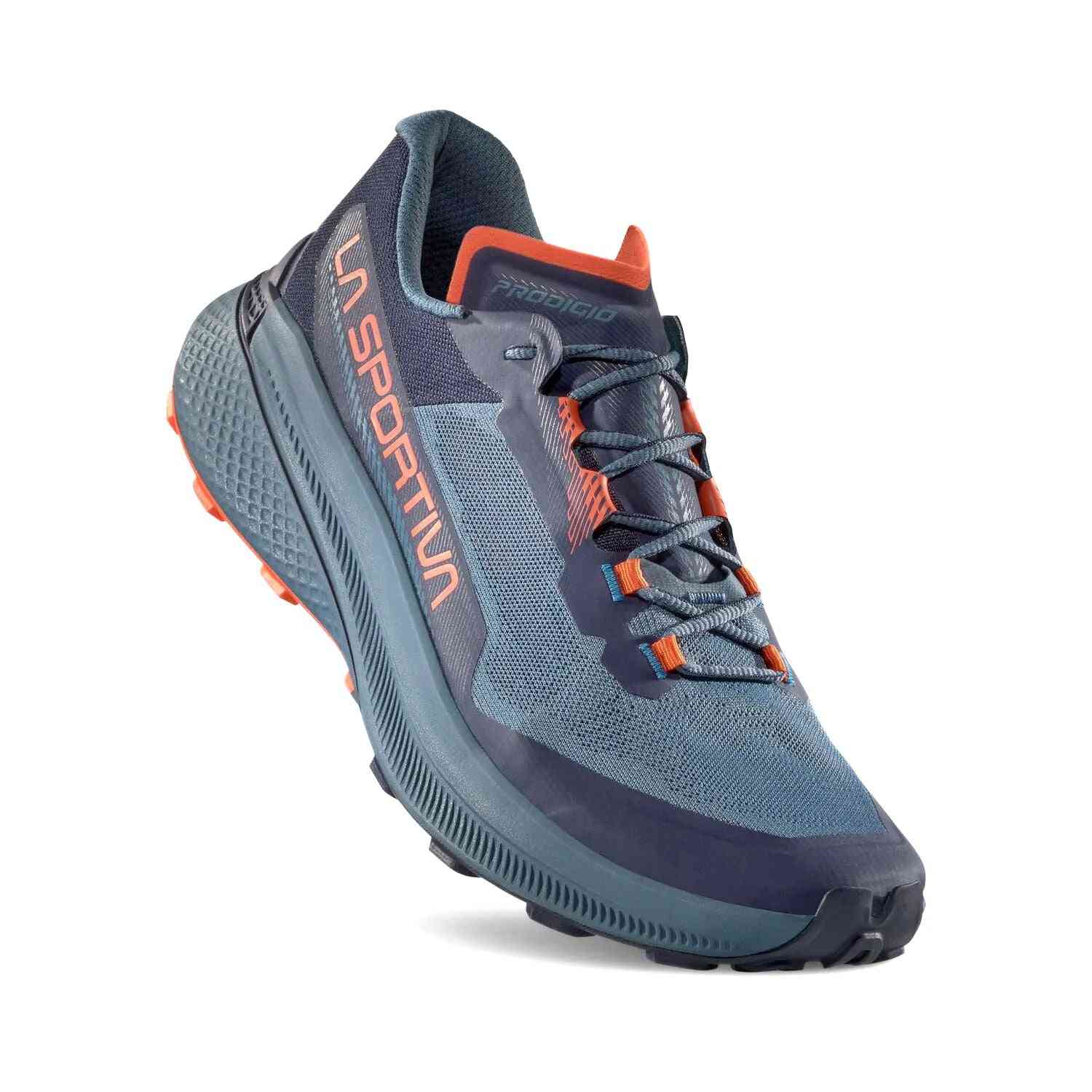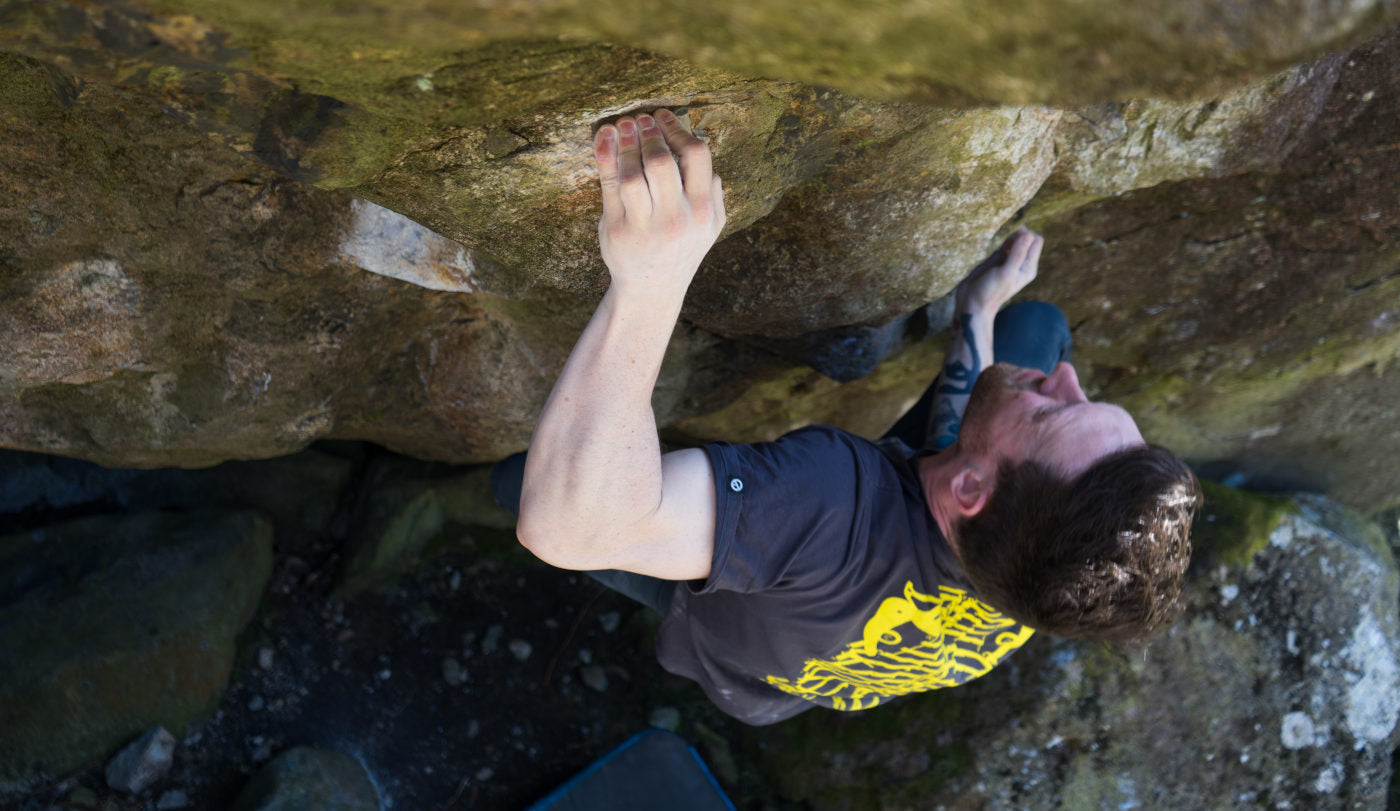
Here at last! The new Eastern Crags guide is now available nearly 90 years after the FRCC produced their very first guidebook to Dow Crag in 1922. No longer are the proud crags of the Eastern Fells piggy-backed on to what some might see as the inferior area of Buttermere. As well as being split between 2 separate areas the previous 1992 guide was hard to come by, and lacked the eye catching appeal of modern guides. The new guide covers the area from Kendal to the South, running up Thirlmere to Keswick and Carrock Fell in the North; and then to Penrith and Shap in the East. Due to its relative ease of access along two of the Lake District’s larger roads; as well as being less popular with the ice cream toting crowds that haunt the Langdale and Borrowdale Valleys, the Eastern Crags have long been favorites of the residents of Kendal and Keswick. The area caters well for climbers of all abilities, Castle Rock and Gouther Crag in particular having as fine a spread of lower and mid-grade routes as anywhere in the district. Obviously in the higher grades the region is well blessed with steep rock at the imposing bastions of Dove Crag, Raven Crag Thirlmere, Iron Crag and Raven Crag Threshthwaite Cove.

Being in the same series it is not surprising that Eastern Crags follows the same format as the Gable and Pillar, and Buttermere and St Bees Guides. The styling throughout the series is particularly neat with colour coded plastic covers, marker ribbons and crag headers. Having made a relatively late switch from drawings (all be it superb ones) to the use of photo diagrams, the FRCC have really gone to town. The majority of the climbs in the book are clearly marked on a photo topo. All of the photos are taken in the optimum light conditions to pick out the features of the crag. This is ignorant; a poor photo can be next to useless for route finding, whereas a great photo can really inspire (the finest example probably being the Cloggy photos in Ground Up's North Wales guide). Waiting for such sunny days must clearly have taken some serious patience given the local climate! The only crag for which it appears as though this may not have worked is the North Crag of Castle Rock, where crucially the starts of the routes are obscured by trees. Here the first time visitor to the crag may have benefited from a couple of shots from the base of the crag as per the latest Tremadog Guide. The style of the guide is typically clean and simple - I can’t imagine we’ll be seeing Rockfax style icons next to each climb appearing in any FRCC guides any time soon! Personally speaking I much prefer the functionality of this clutter free design to that of some other guide book producers who seem to have been so busy filling up every available inch of page space that they’ve forgotten the purpose of their guidebook (Jingo Wobbly Syndrome). It’s interesting that this clearness of layout can also be seen in the latest crop of bouldering guides – maybe the tide is turning?

Another area in which this guide has been modernised is more in what has been left out, than left in. Many minor crags and buttresses are only mentioned in passing and the climbs are lekleine.jpgft recorded for those who are interested on the database available on the FRCC website. With the abundance of routes of slightly dubious worth in the Lakes, more of which are ‘discovered’ each week, this would seem to be a sensible step in order to keep the guide at a reasonable length, or possibly to make room for more photos. Alastair Lee’s cover photo of Dave Birkett on Up Hellya, E8, Dove Crag really sets the standard here. There’s no shortage of inspiring action shots which should get more climbers itching to get up to these great crags. Those such as myself, who are of a slightly anorak-ish nature will find a rich seam of crag trivia in the Historical and First Ascents sections. The use of photos in the First Ascents list in particular is a great idea.
In Conclusion
If the purpose of a guidebook is to inspire as well as provide instructions then there is no doubt that Eastern Crags is a winner on both fronts. I do miss the graded lists of the previous series, but maybe it was simply the cause of too much debate. As well as the obvious attractions of the major crags there are several smaller outcrops covered in the guide that few will have been aware of, some of these look excellent and will no doubt become more popular as a result. Overall this is another great guide that is befitting of one of the finest areas of climbing in the country.
 Here at last! The new Eastern Crags guide is now available nearly 90 years after the FRCC produced their very first guidebook to Dow Crag in 1922. No longer are the proud crags of the Eastern Fells piggy-backed on to what some might see as the inferior area of Buttermere. As well as being split between 2 separate areas the previous 1992 guide was hard to come by, and lacked the eye catching appeal of modern guides. The new guide covers the area from Kendal to the South, running up Thirlmere to Keswick and Carrock Fell in the North; and then to Penrith and Shap in the East. Due to its relative ease of access along two of the Lake District’s larger roads; as well as being less popular with the ice cream toting crowds that haunt the Langdale and Borrowdale Valleys, the Eastern Crags have long been favorites of the residents of Kendal and Keswick. The area caters well for climbers of all abilities, Castle Rock and Gouther Crag in particular having as fine a spread of lower and mid-grade routes as anywhere in the district. Obviously in the higher grades the region is well blessed with steep rock at the imposing bastions of Dove Crag, Raven Crag Thirlmere, Iron Crag and Raven Crag Threshthwaite Cove.
Here at last! The new Eastern Crags guide is now available nearly 90 years after the FRCC produced their very first guidebook to Dow Crag in 1922. No longer are the proud crags of the Eastern Fells piggy-backed on to what some might see as the inferior area of Buttermere. As well as being split between 2 separate areas the previous 1992 guide was hard to come by, and lacked the eye catching appeal of modern guides. The new guide covers the area from Kendal to the South, running up Thirlmere to Keswick and Carrock Fell in the North; and then to Penrith and Shap in the East. Due to its relative ease of access along two of the Lake District’s larger roads; as well as being less popular with the ice cream toting crowds that haunt the Langdale and Borrowdale Valleys, the Eastern Crags have long been favorites of the residents of Kendal and Keswick. The area caters well for climbers of all abilities, Castle Rock and Gouther Crag in particular having as fine a spread of lower and mid-grade routes as anywhere in the district. Obviously in the higher grades the region is well blessed with steep rock at the imposing bastions of Dove Crag, Raven Crag Thirlmere, Iron Crag and Raven Crag Threshthwaite Cove.  Being in the same series it is not surprising that Eastern Crags follows the same format as the Gable and Pillar, and Buttermere and St Bees Guides. The styling throughout the series is particularly neat with colour coded plastic covers, marker ribbons and crag headers. Having made a relatively late switch from drawings (all be it superb ones) to the use of photo diagrams, the FRCC have really gone to town. The majority of the climbs in the book are clearly marked on a photo topo. All of the photos are taken in the optimum light conditions to pick out the features of the crag. This is ignorant; a poor photo can be next to useless for route finding, whereas a great photo can really inspire (the finest example probably being the Cloggy photos in Ground Up's North Wales guide). Waiting for such sunny days must clearly have taken some serious patience given the local climate! The only crag for which it appears as though this may not have worked is the North Crag of Castle Rock, where crucially the starts of the routes are obscured by trees. Here the first time visitor to the crag may have benefited from a couple of shots from the base of the crag as per the latest Tremadog Guide. The style of the guide is typically clean and simple - I can’t imagine we’ll be seeing Rockfax style icons next to each climb appearing in any FRCC guides any time soon! Personally speaking I much prefer the functionality of this clutter free design to that of some other guide book producers who seem to have been so busy filling up every available inch of page space that they’ve forgotten the purpose of their guidebook (Jingo Wobbly Syndrome). It’s interesting that this clearness of layout can also be seen in the latest crop of bouldering guides – maybe the tide is turning?
Being in the same series it is not surprising that Eastern Crags follows the same format as the Gable and Pillar, and Buttermere and St Bees Guides. The styling throughout the series is particularly neat with colour coded plastic covers, marker ribbons and crag headers. Having made a relatively late switch from drawings (all be it superb ones) to the use of photo diagrams, the FRCC have really gone to town. The majority of the climbs in the book are clearly marked on a photo topo. All of the photos are taken in the optimum light conditions to pick out the features of the crag. This is ignorant; a poor photo can be next to useless for route finding, whereas a great photo can really inspire (the finest example probably being the Cloggy photos in Ground Up's North Wales guide). Waiting for such sunny days must clearly have taken some serious patience given the local climate! The only crag for which it appears as though this may not have worked is the North Crag of Castle Rock, where crucially the starts of the routes are obscured by trees. Here the first time visitor to the crag may have benefited from a couple of shots from the base of the crag as per the latest Tremadog Guide. The style of the guide is typically clean and simple - I can’t imagine we’ll be seeing Rockfax style icons next to each climb appearing in any FRCC guides any time soon! Personally speaking I much prefer the functionality of this clutter free design to that of some other guide book producers who seem to have been so busy filling up every available inch of page space that they’ve forgotten the purpose of their guidebook (Jingo Wobbly Syndrome). It’s interesting that this clearness of layout can also be seen in the latest crop of bouldering guides – maybe the tide is turning?  Another area in which this guide has been modernised is more in what has been left out, than left in. Many minor crags and buttresses are only mentioned in passing and the climbs are lekleine.jpgft recorded for those who are interested on the database available on the FRCC website. With the abundance of routes of slightly dubious worth in the Lakes, more of which are ‘discovered’ each week, this would seem to be a sensible step in order to keep the guide at a reasonable length, or possibly to make room for more photos. Alastair Lee’s cover photo of Dave Birkett on Up Hellya, E8, Dove Crag really sets the standard here. There’s no shortage of inspiring action shots which should get more climbers itching to get up to these great crags. Those such as myself, who are of a slightly anorak-ish nature will find a rich seam of crag trivia in the Historical and First Ascents sections. The use of photos in the First Ascents list in particular is a great idea.
Another area in which this guide has been modernised is more in what has been left out, than left in. Many minor crags and buttresses are only mentioned in passing and the climbs are lekleine.jpgft recorded for those who are interested on the database available on the FRCC website. With the abundance of routes of slightly dubious worth in the Lakes, more of which are ‘discovered’ each week, this would seem to be a sensible step in order to keep the guide at a reasonable length, or possibly to make room for more photos. Alastair Lee’s cover photo of Dave Birkett on Up Hellya, E8, Dove Crag really sets the standard here. There’s no shortage of inspiring action shots which should get more climbers itching to get up to these great crags. Those such as myself, who are of a slightly anorak-ish nature will find a rich seam of crag trivia in the Historical and First Ascents sections. The use of photos in the First Ascents list in particular is a great idea.















